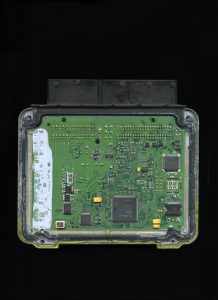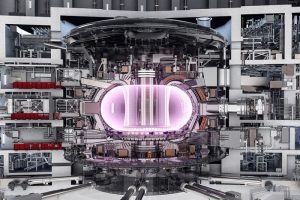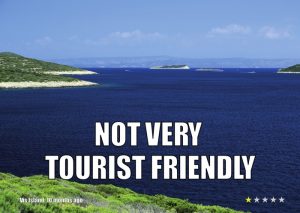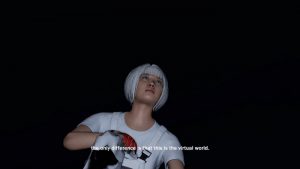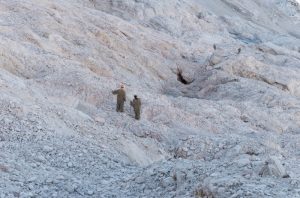A couple of months ago, i was invited to Laboral in Gijon to visit the exhibition AUTO. SUEÑO Y MATERIA (See my reports: Cars and landscapes, Artists’ automobiles, Manufacturing cars, and Artificial traffic jam in the mountains.) As much as i enjoyed the car show, the artworks i found most meaningful and engaging were in other rooms, the ones that hosted another exhibition called El pasado en el presente y lo propio en lo ajeno (The past in the present and the near in the far).
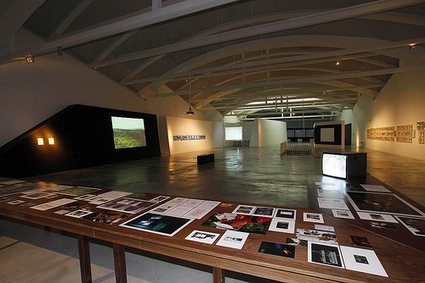 Angel de la Rubia, La fosa de Valdedios. Photo Enrique Cardenas
Angel de la Rubia, La fosa de Valdedios. Photo Enrique Cardenas
The exhibition reveals how “the ghosts of memory”, as sociologist Avery F. Gordon calls them, reach out from the past and haunt the present, influencing how we understand and construct it. More precisely, the show investigates the mutual influence between this phantom of memory and the territory.
El pasado en el presente y lo propio en lo ajeno is not a pop nor ready-to-eat exhibition. You have to take it slowly, read carefully some historical background on almost every single piece on show and sit through many videos. Everyone knows i’m not video art’s best friend. Yet, i caught myself enjoying most of the films i saw there.
The first video came with the magic words: “a work by Jeremy Deller“. Jeremy, i love your work. I didn’t see The Steam Powered Internet Machine but it looked too poetical to ignore. I did get to visit From One Revolution to Another, an exhibition Deller curated for the Palais de Tokyo in Paris and found it ballsy-awesome (if any of you reads swedish, here‘s my take on it.)
For El pasado en el presente y lo propio en lo ajeno, Laboral was screening Battle of Orgreave. With the help of film-maker Mike Figgis, Deller reenacted what is often regarded as the most brutal and controversial confrontation between police and picketing miners that took place under Thatcher’s reign.
All i knew about the event was this photography of a striker wearing a toy police hat and facing of police lines:
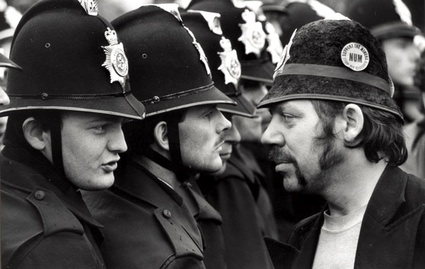 Photograph: Don McPhee
Photograph: Don McPhee
The Battle of Orgreave took place on 18 June 1984 in Orgreave, South Yorkshire. After weeks of picketing, some 5,000 miners and supporters were protesting outside the coking plant. A few bricks were thrown. The police commander responded by sending in the mounted police. It was a serious overreaction and events quickly escalated, with force out of control and delivering baton beatings to unarmed miners, the cavalry entering Orgreave village, etc.
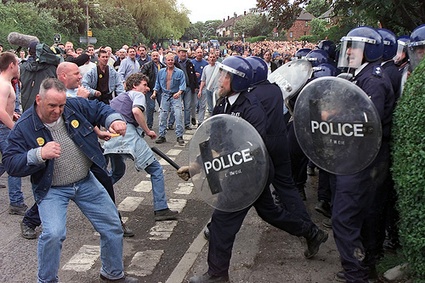 Battle of Orgreave re-enactment organised by Jeremy Deller and Mike Figgis, Artangel, 2002. © Martin Jenkinson
Battle of Orgreave re-enactment organised by Jeremy Deller and Mike Figgis, Artangel, 2002. © Martin Jenkinson
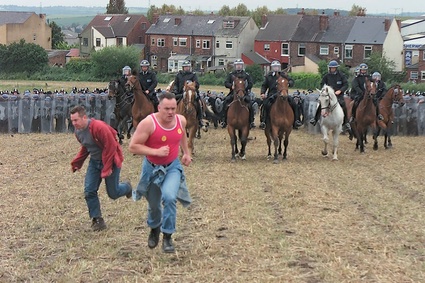 Battle of Orgreave re-enactment organised by Jeremy Deller and Mike Figgis, Artangel, 2002. © Martin Jenkinson
Battle of Orgreave re-enactment organised by Jeremy Deller and Mike Figgis, Artangel, 2002. © Martin Jenkinson
The event symbolizes the end of the coal industry, the resistance to Thatcherism’s attempt to crush miners’ community and reactionary police apparatus. Its reenactment is extremely moving. Actors are members of amateur historical re-enactment groups but also ex-miners who returned to the former battleground to relive a moment in the destruction of their livelihoods and community. A few ex-policemen were there too. Personal testimonies are intertwined with perspectives on a wider social history of the ’80s. The hypocrisy of the time and media’s role in covering up the truth are also highlighted.
Footage from Mike Figgis documentary on art project by Jeremy Deller that re-enacted the pitched battle between miners and police during the 1984 miners strike
You can check out Jeremy Deller’s video over here.
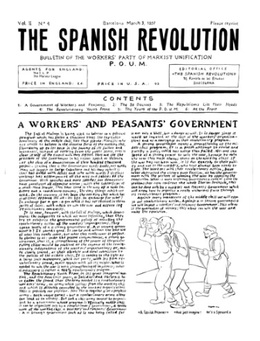 The Spanish Revolution, 2003
The Spanish Revolution, 2003
Another work i found particularly striking is Fernando Bryce‘s series of ink drawings on paper that revisit historical events by meticulously reproducing the printed materials that they generated. The artist scours through political pamphlets, posters, calendars, newspapers, magazines, portraits, tourist publications and official correspondence to investigate his subject, favouring often relatively obscure or ‘minor’ records.
The first series, The Spanish Revolution, reproduces the covers of the English version of the newspaper POUM (Partido Obrero de Unificación Marxista, or Workers’ Party of Marxist Unification), published between 1936 and 1937. In the second, The Spanish War, Bryce compiles and draws an extensive archive of the Civil War.
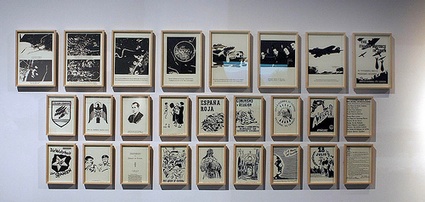 Fernando Bryce.The Spanish Revolution. Photo Enrique Cardenas
Fernando Bryce.The Spanish Revolution. Photo Enrique Cardenas
Over the last two years Avelino Sala has been researching and cataloging the different locations of representation of imperial power through one of its most popular symbols: the eagle. One of them is in fact located in the central courtyard at Universidad Laboral, a few steps away from the Laboral exhibition center, and acting thus as a souvenir of Spanish dictator Franco‘s role in the conception and construction of the colossal building. In Laboral, the eagle is probably familiar to those who experienced this recent past and is, thus, a persistence of memory as an imposition.
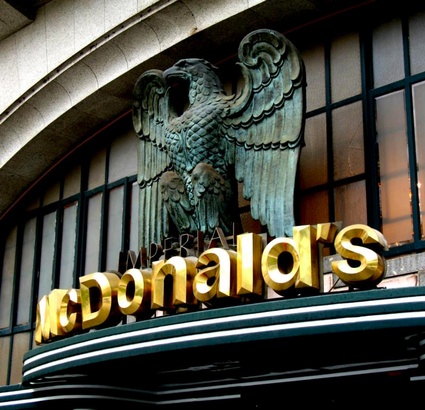 Avelino Sala, Imperial McDonald, Porto. Image
Avelino Sala, Imperial McDonald, Porto. Image
It’s easy to go from Sala’s eagles to Unsettling the Fragments (Erschütterung der Fragmente), the artwork that Martha Rosler created for the 2007 Münster Sculpture Projects.
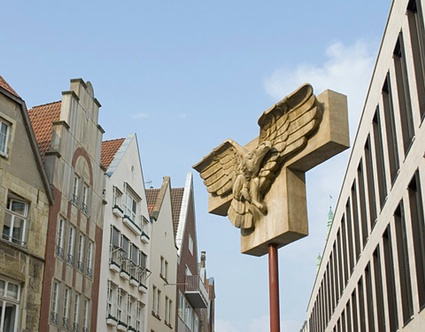 One element of Martha Rosler’s Unsettling the Fragments (2007) in Skulptur Projekte Münster 07. Photo by Thorsten Arendt
One element of Martha Rosler’s Unsettling the Fragments (2007) in Skulptur Projekte Münster 07. Photo by Thorsten Arendt
The American artist decided to conjure up the ghosts of the city’s most uncomfortable hours and, therefore, of the history of Germany. She relocated historical remains to their previous places, drawing attention to past traumas which citizens would rather not to think about. For example, she returned to its original site (right in the middle of the shopping district) the reproduction of a Wehrmacht’s eagle on a pole preserved in the city’s history museum. She also placed in front of the municipal library the metal cages that were used to display the corpses of heretics after their torture and execution in the 16th-century.
Images of the exhibition on Laboral’s flickr set.
El pasado en el presente y lo propio en lo ajeno (The past in the present and the near in the far) is open until September 28, 2009 at Laboral, Gijon, Spain.
Related stories: History will repeat itself (part 1) , (Part 2) and The Problem is Civil Obedience.
p.s. Jeremy Deller’s Procession is up at Cornerhouse, Manchester International festival until 23 August.

